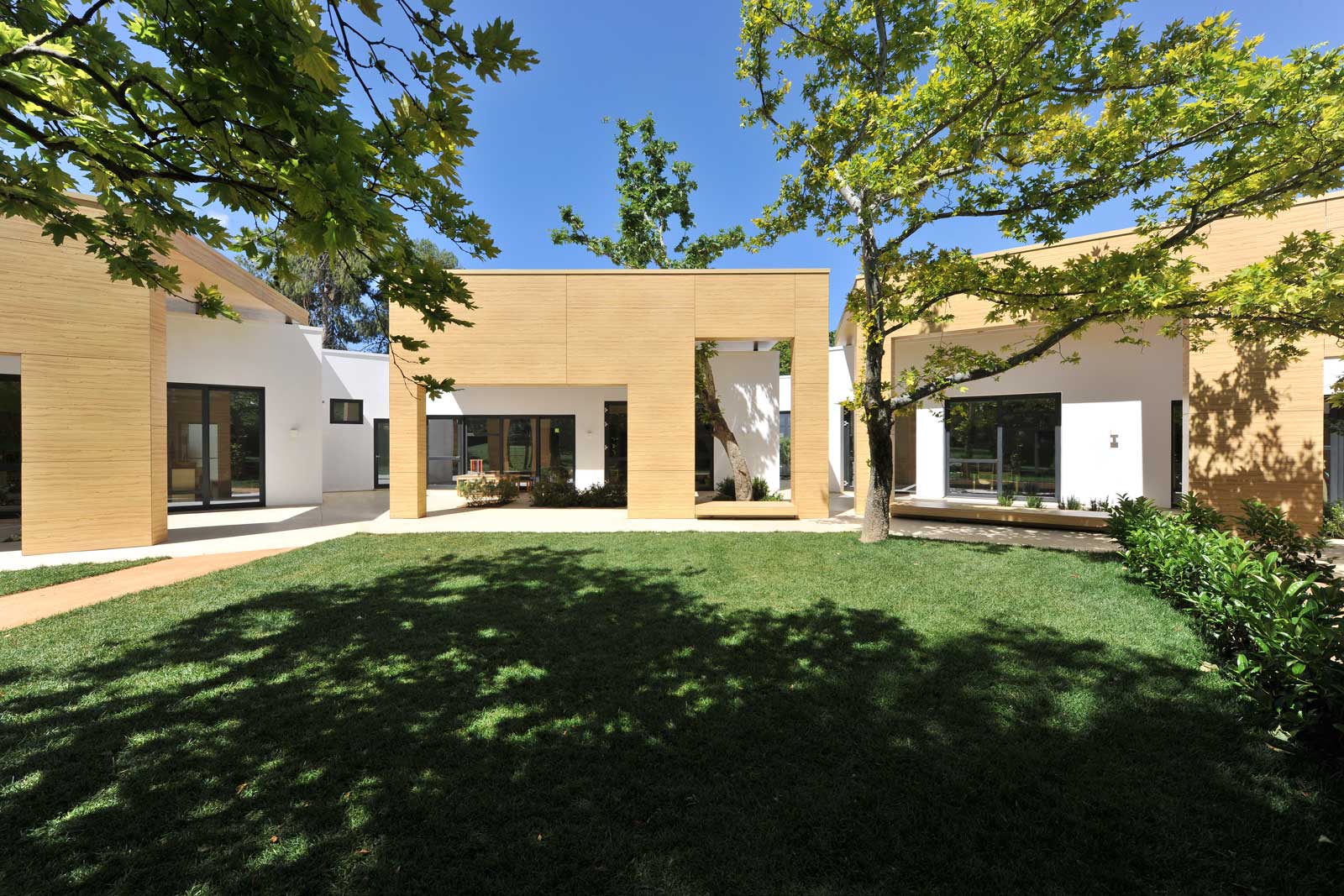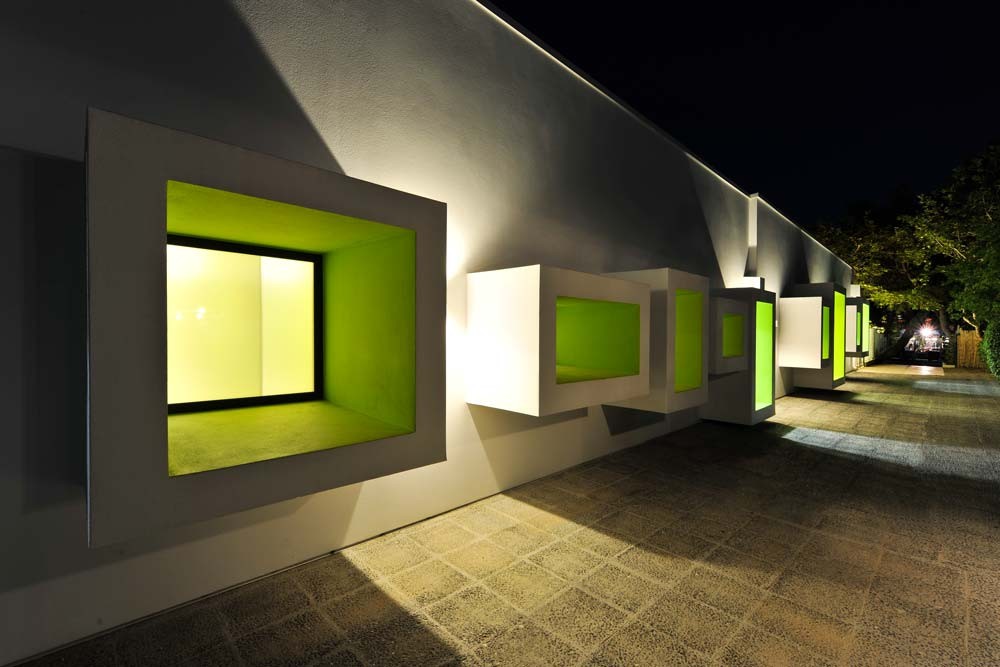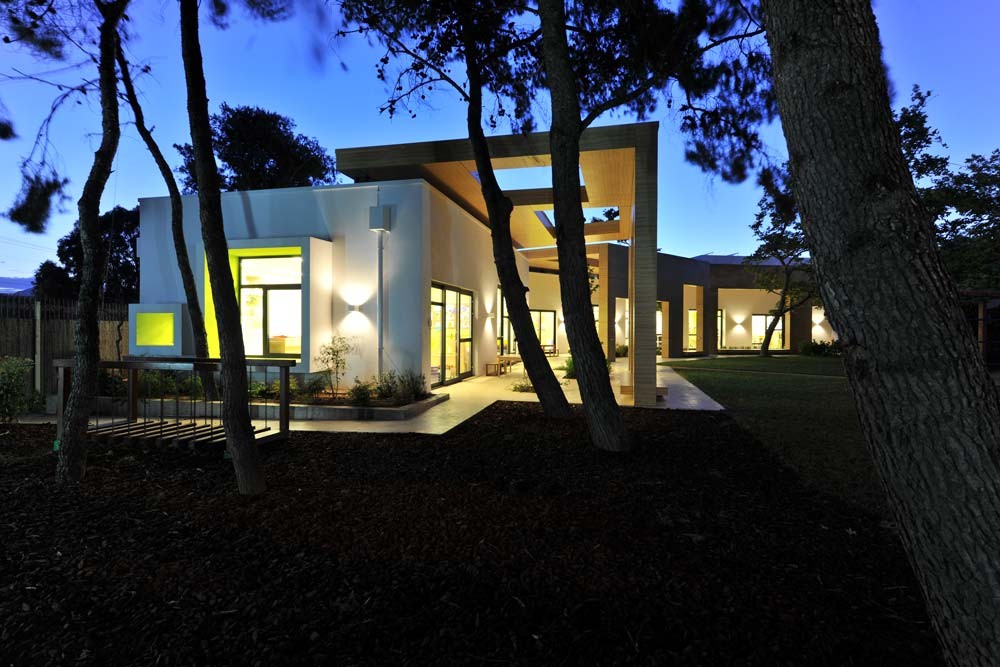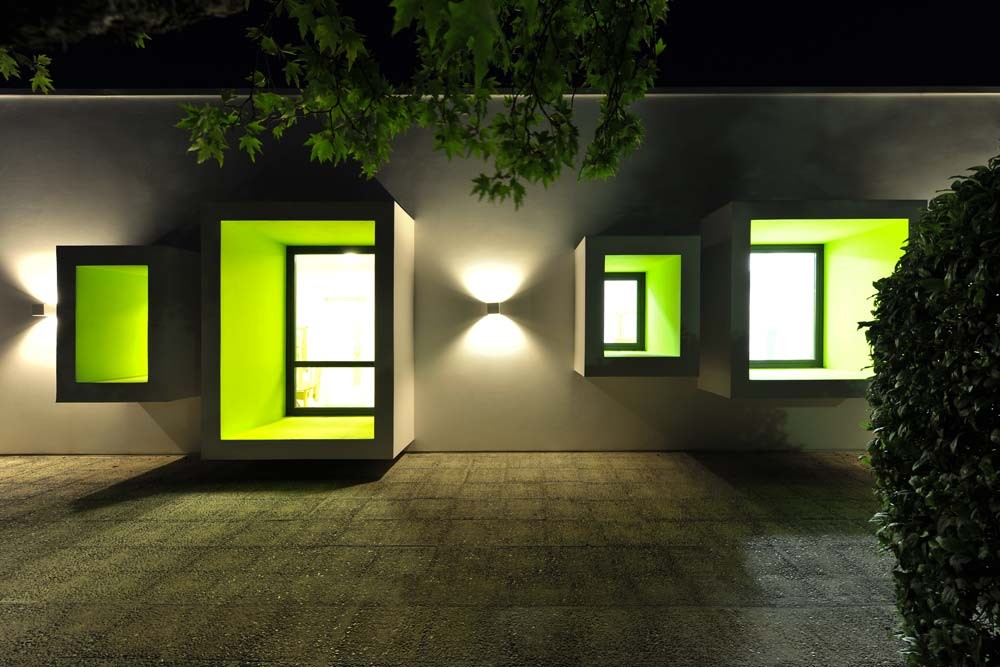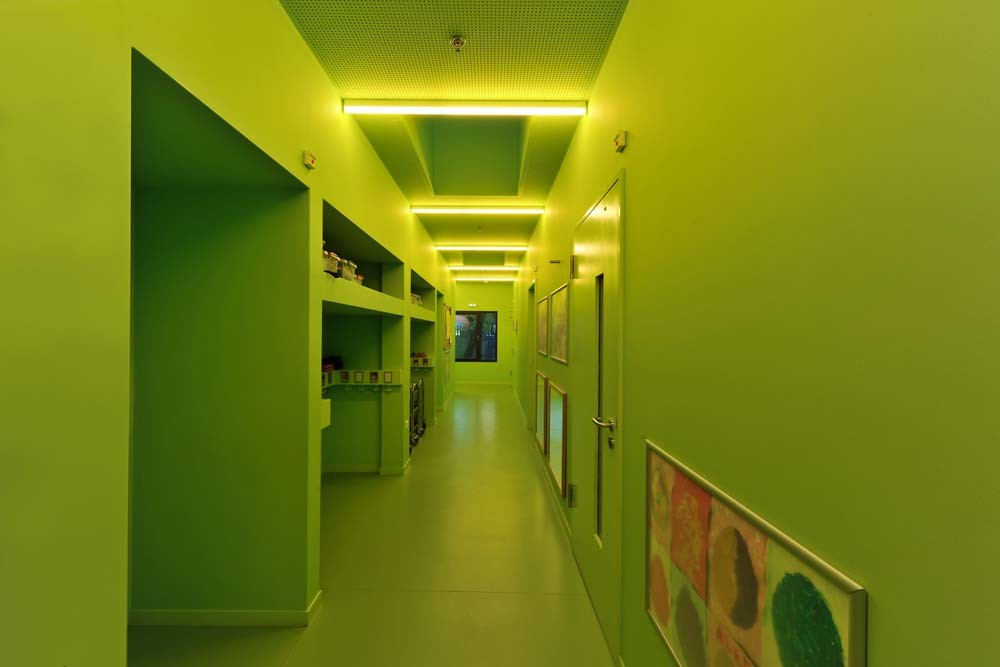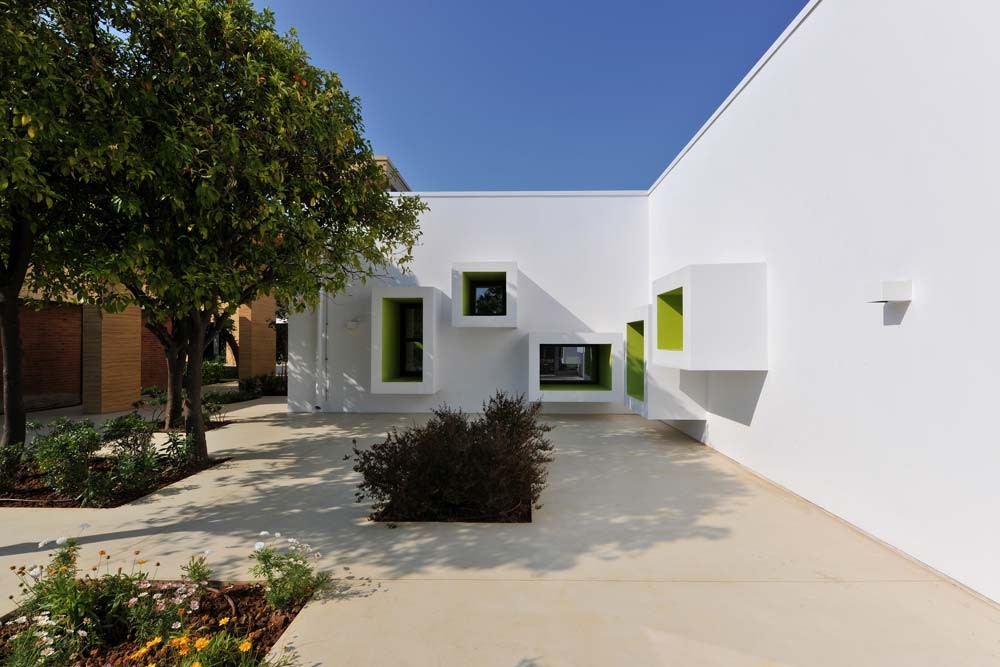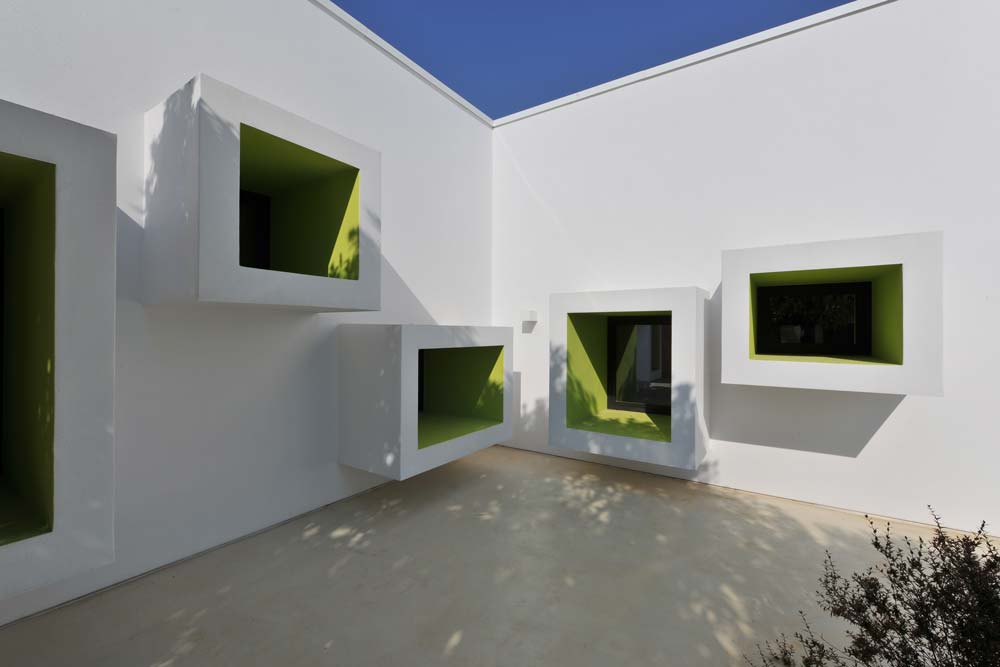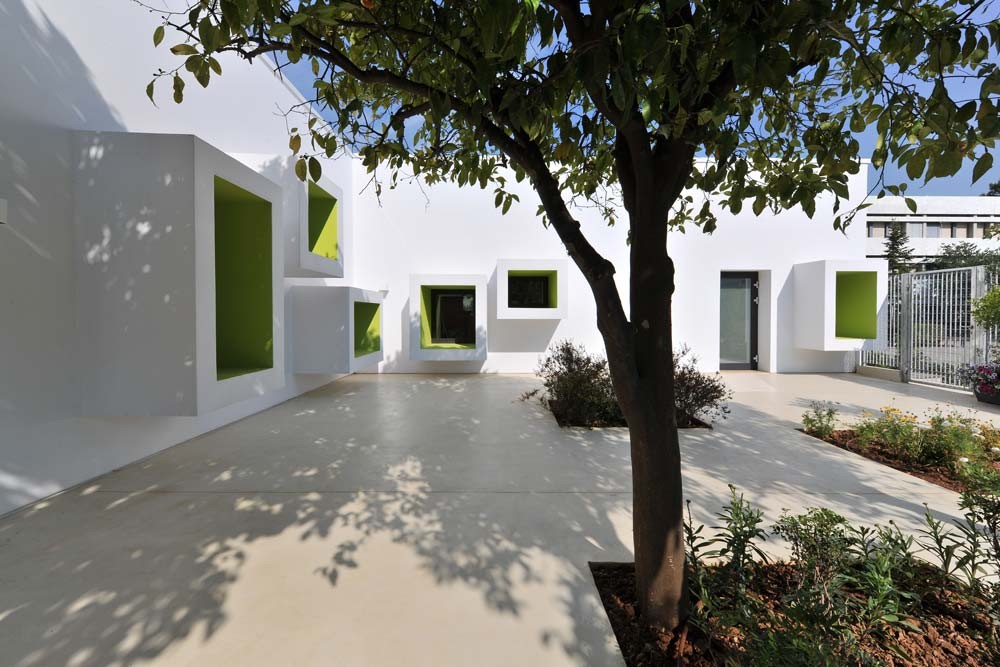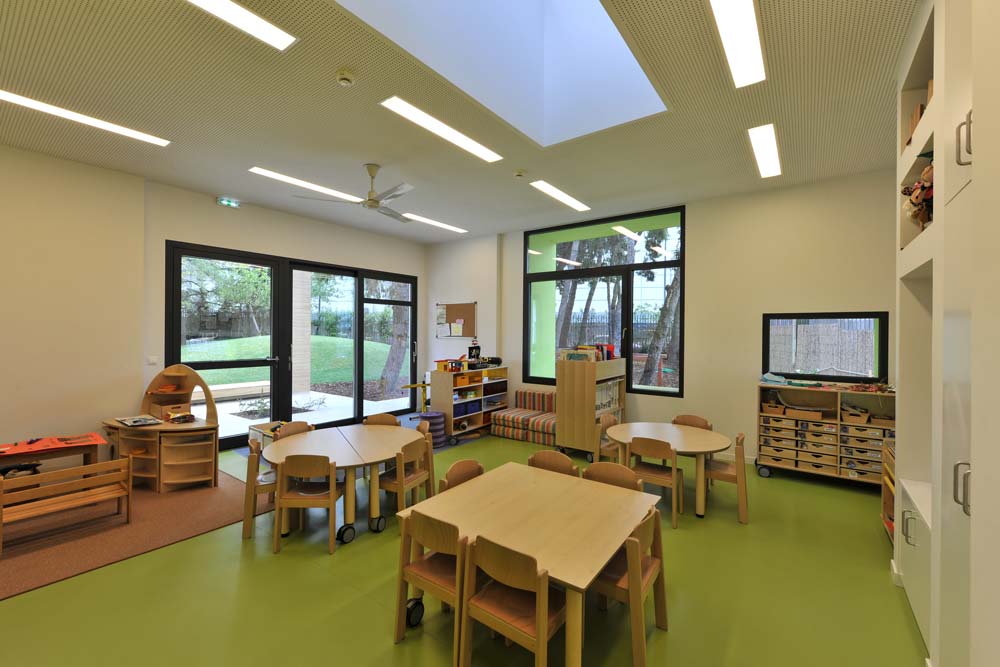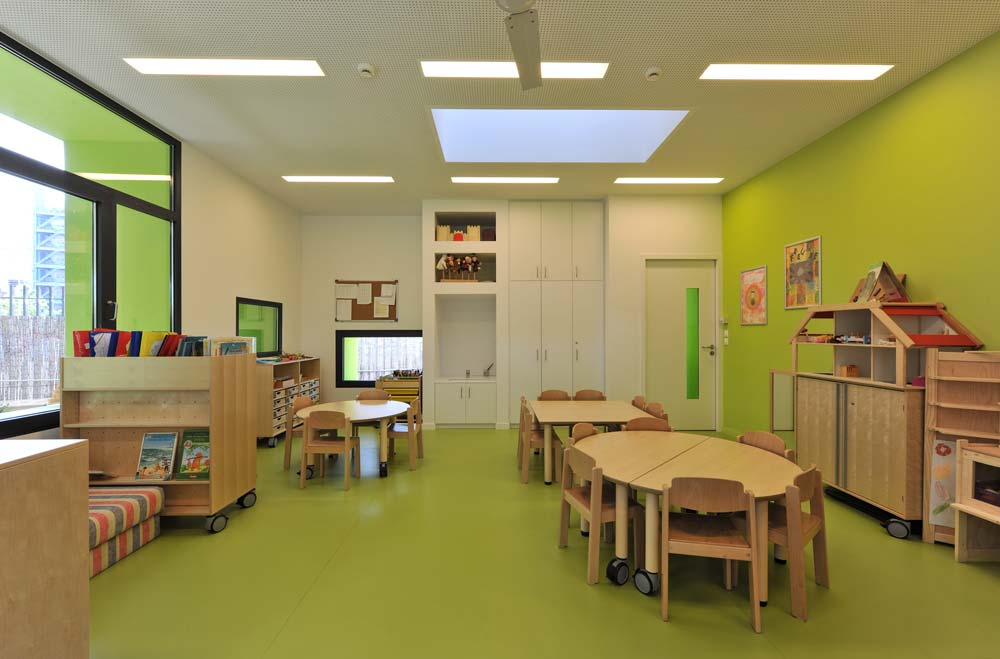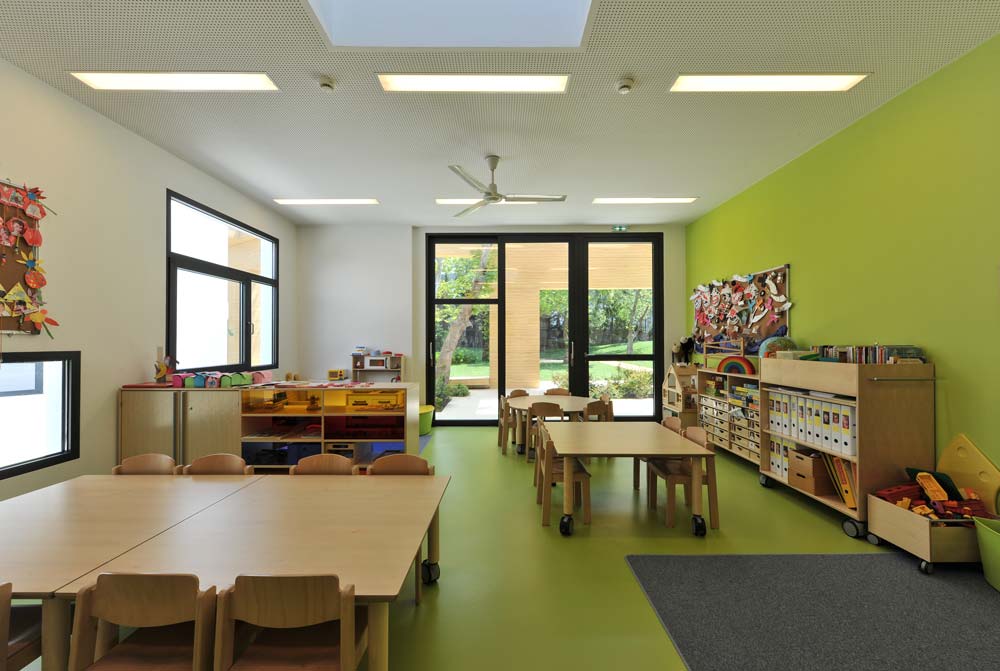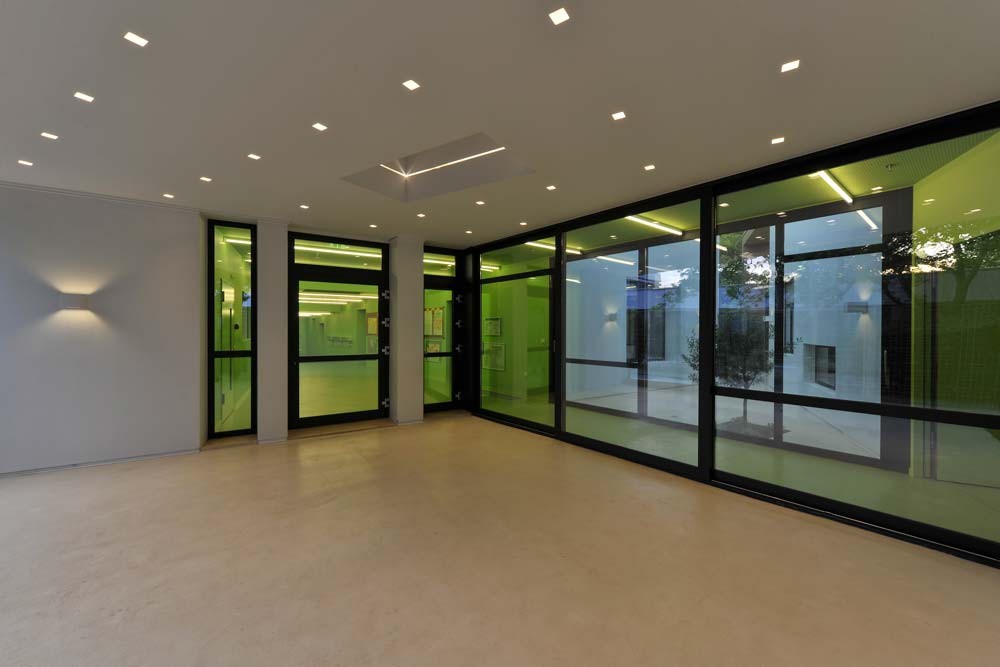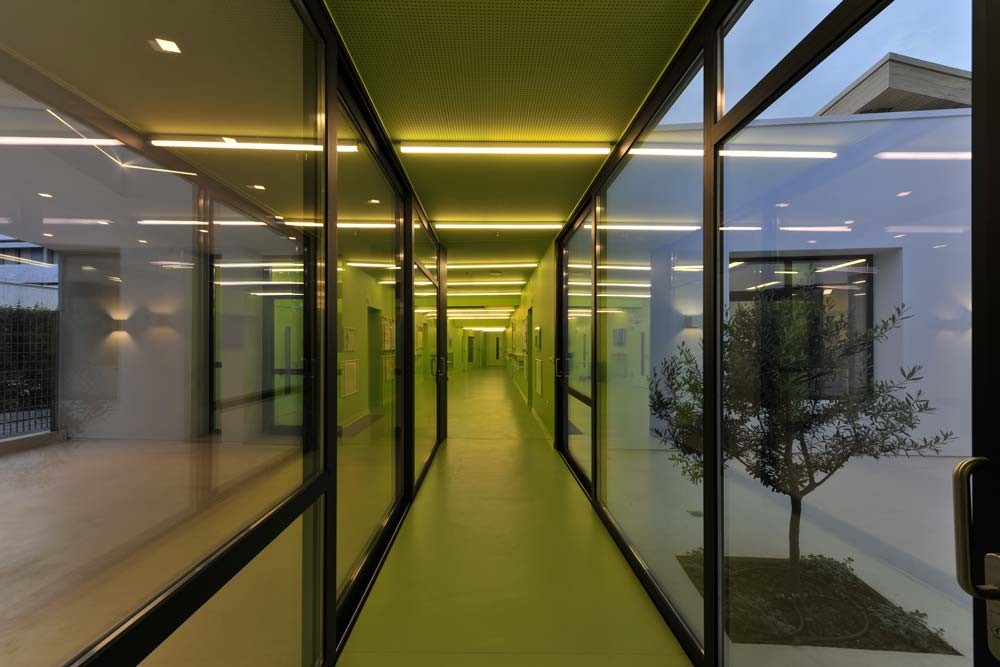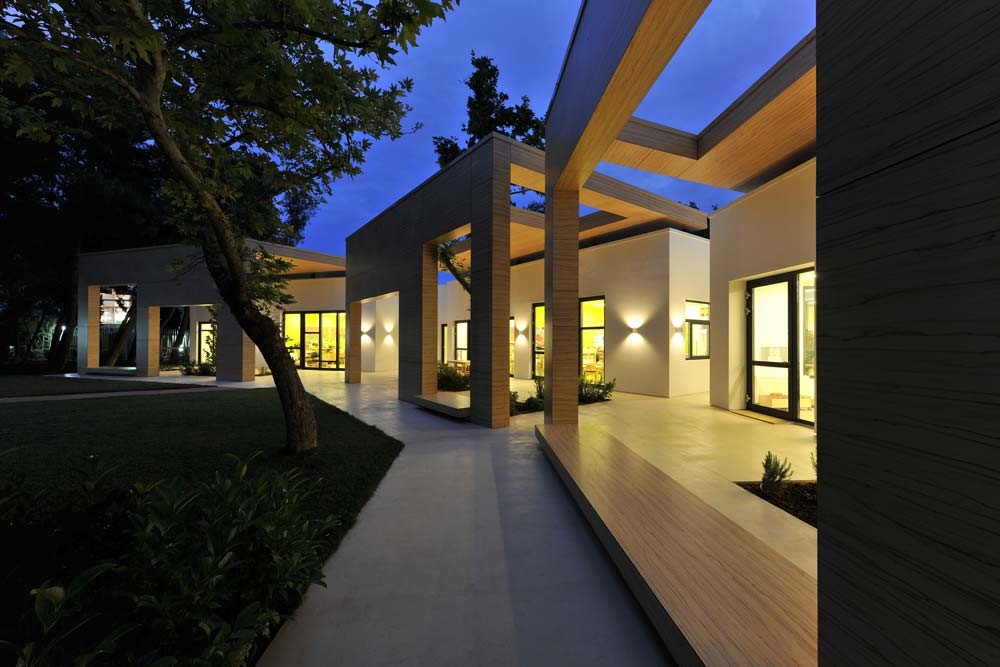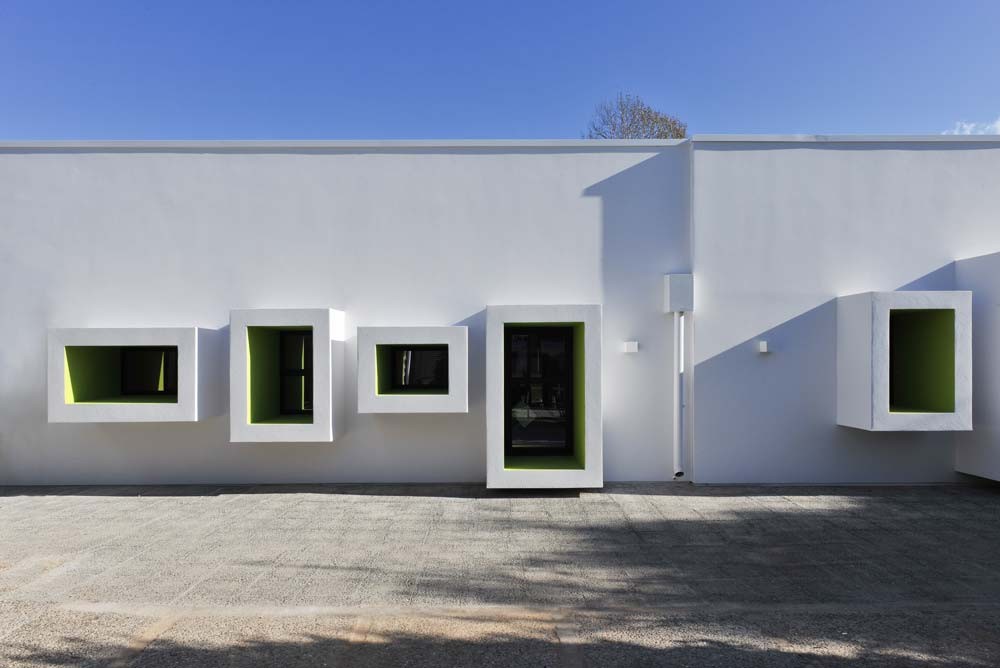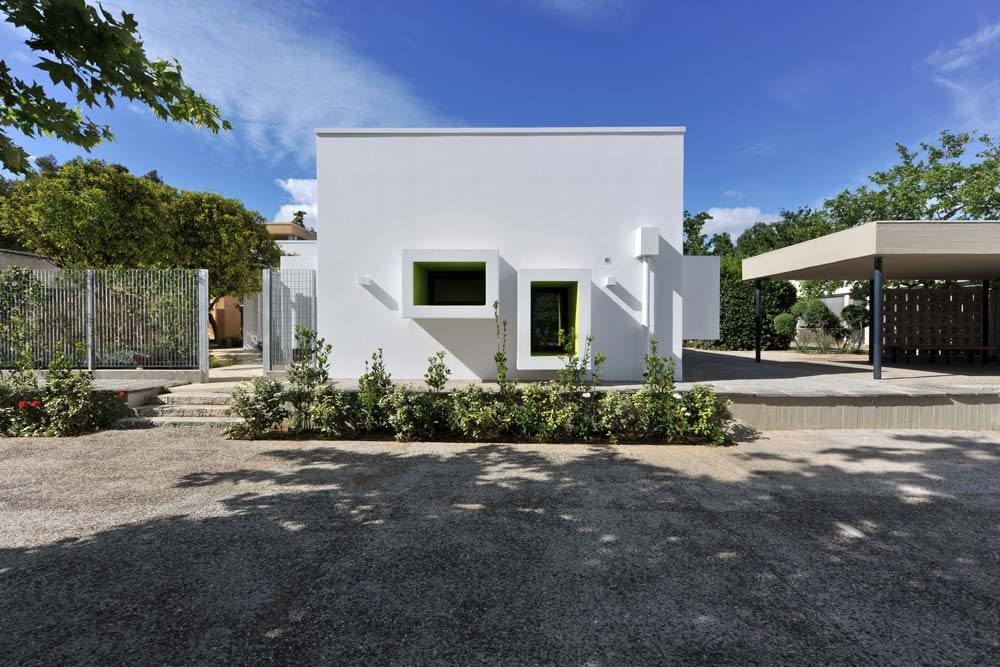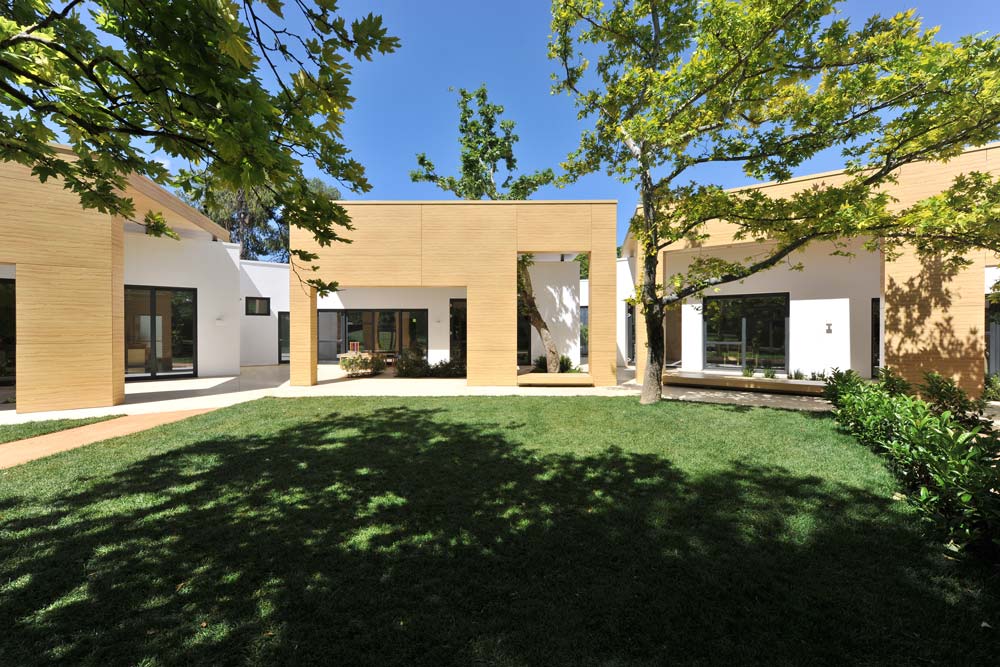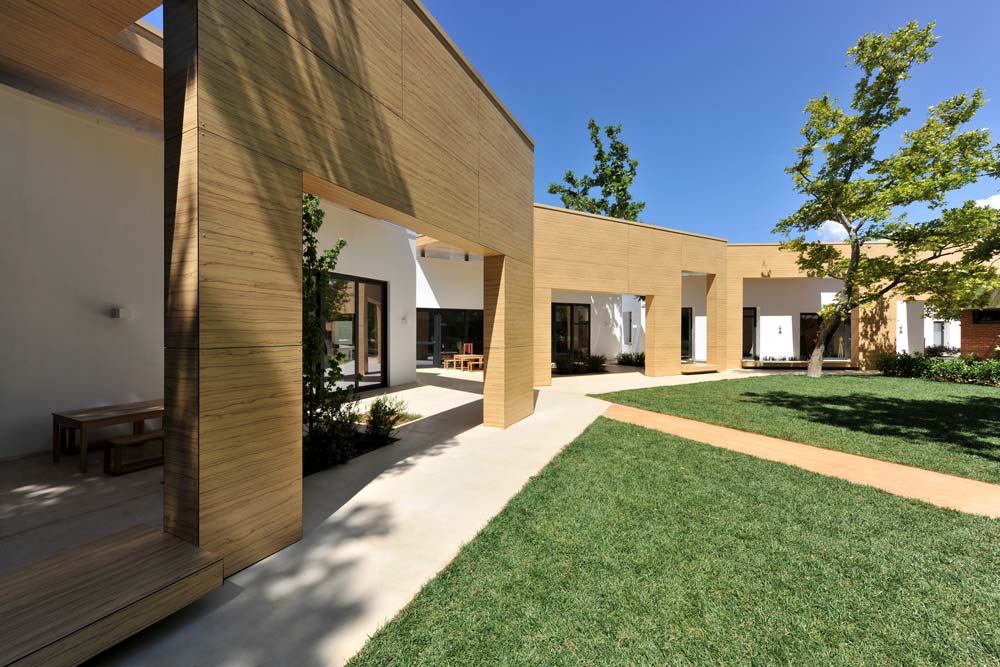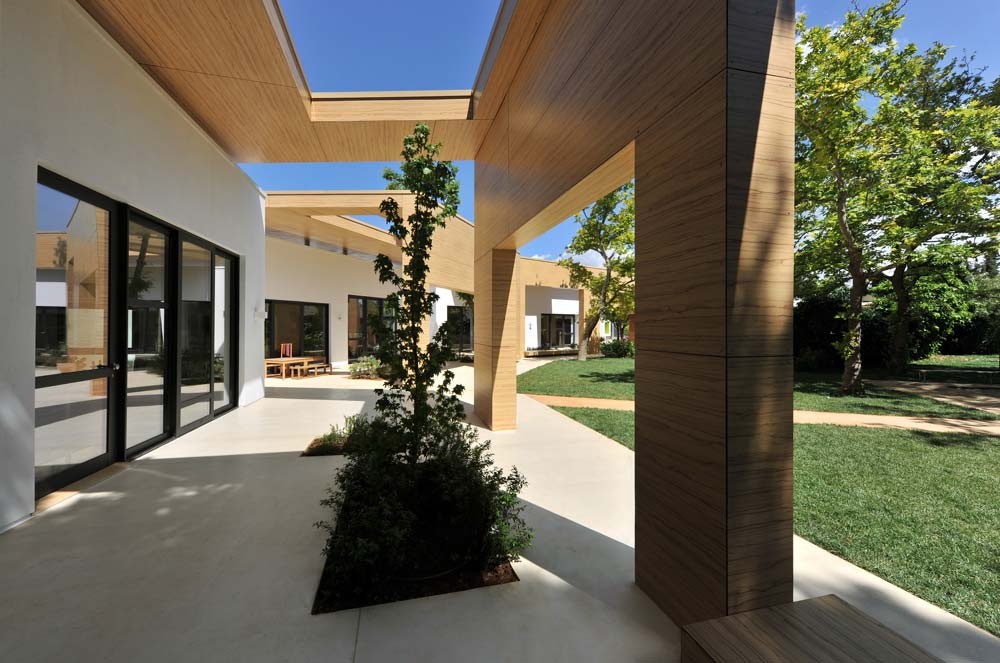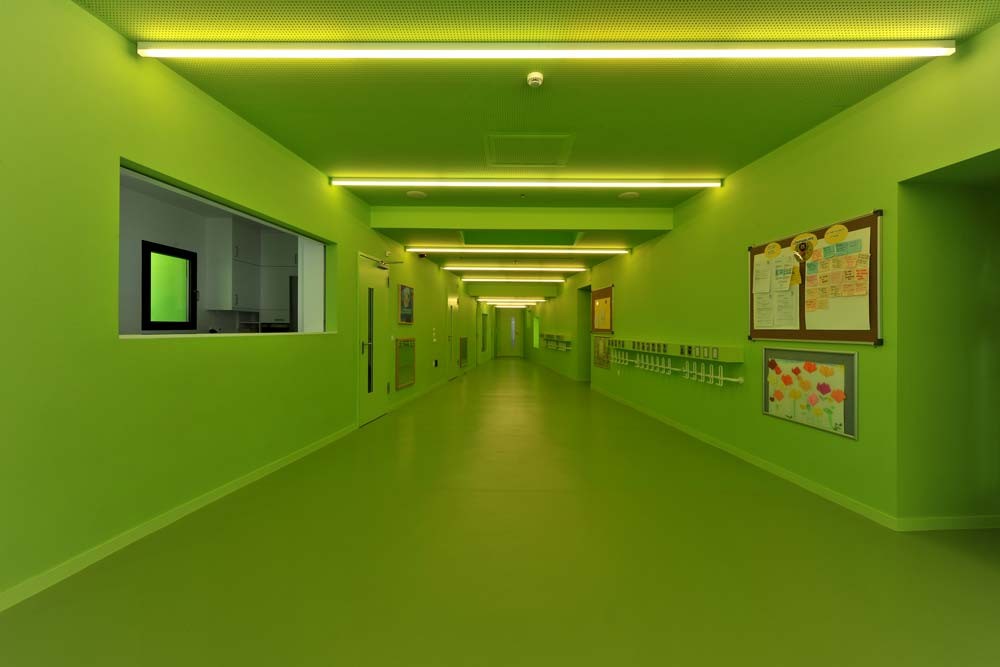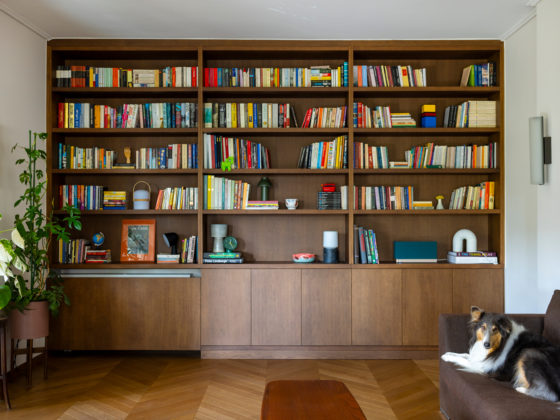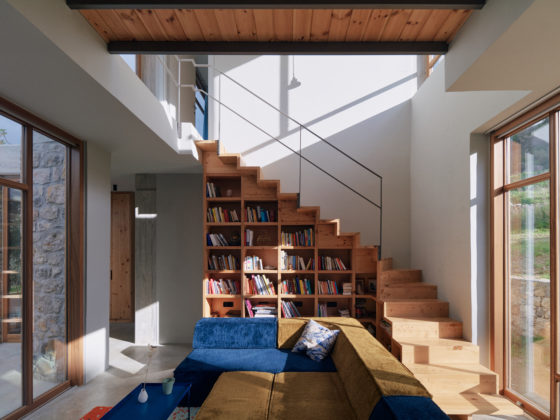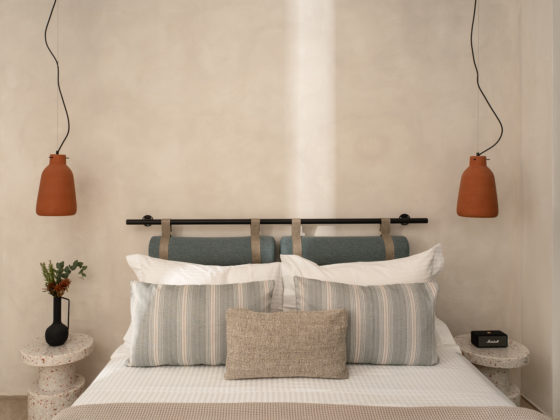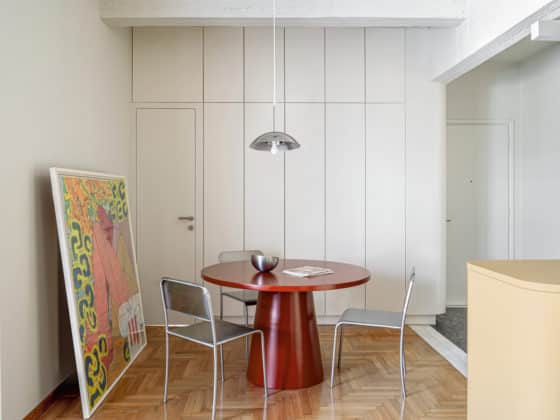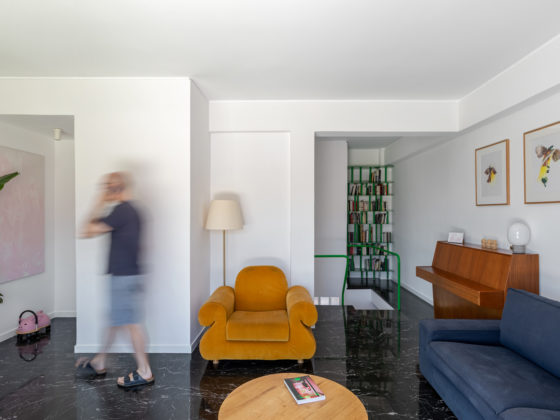The Kindergarten of the German School of Athens has been designed by Potiropoulos D+L Architects in a way that enhances the educational effort by offering a stimulating environment that mobilizes the mental and emotional reflexes of children.
Kindergarten is the first public building a young child comes in contact with, and hence, attributes to it a dilated importance. During the synthetic approach the building was addressed not merely as a function – as is often the case – but as a contributor to the actions of the pupils, as a material semiotic system that interacts with them in various ways and perspectives. This approach is based on the stance that architectural space is not idle, and that measuring it geometrically is not sufficient enough in order to understand it. On the contrary, it constitutes an internal, inherent and transformable part of human daily life, closely connected with the social and personal ‘rituals’ and activities. This concept revolves around the idea of drawing up spatial ‘gestures’ that enhance the educational effort by mobilizing mental and emotional reflexes of the child. The typical proposals for preschool facilities that we know of in Greece seem correct in one sense: about what they say; but what they do not say, what they omit, is the most important. They are proposals based on logic, order and safety, but not for running, carefree wandering, fruitful contrasts, hidden meanings, mere contemplation or for situations ‘out of control’. Thus, a need emerges: “to think the ‘unthinkable’,” as E. Grosz writes, “to imagine an architecture ‘outside’ the boundaries of until now.”
